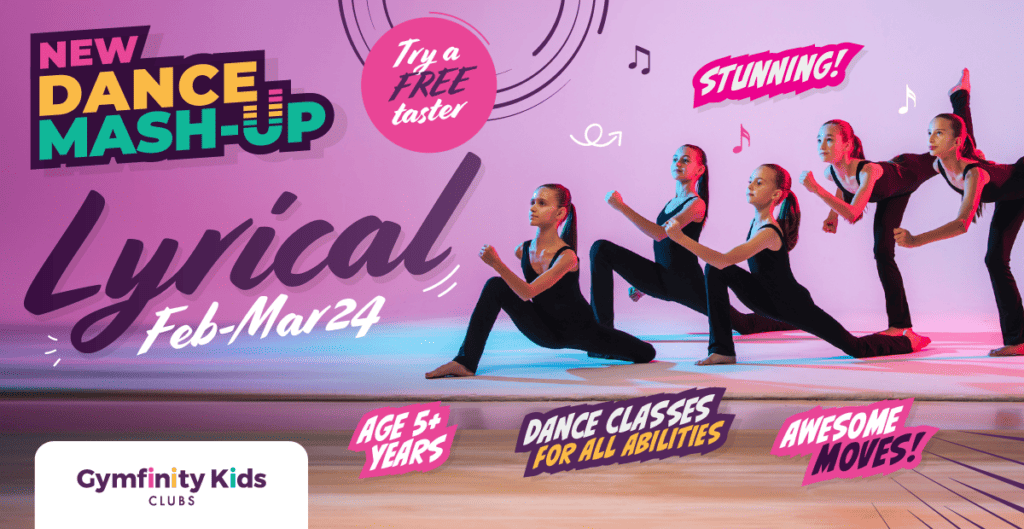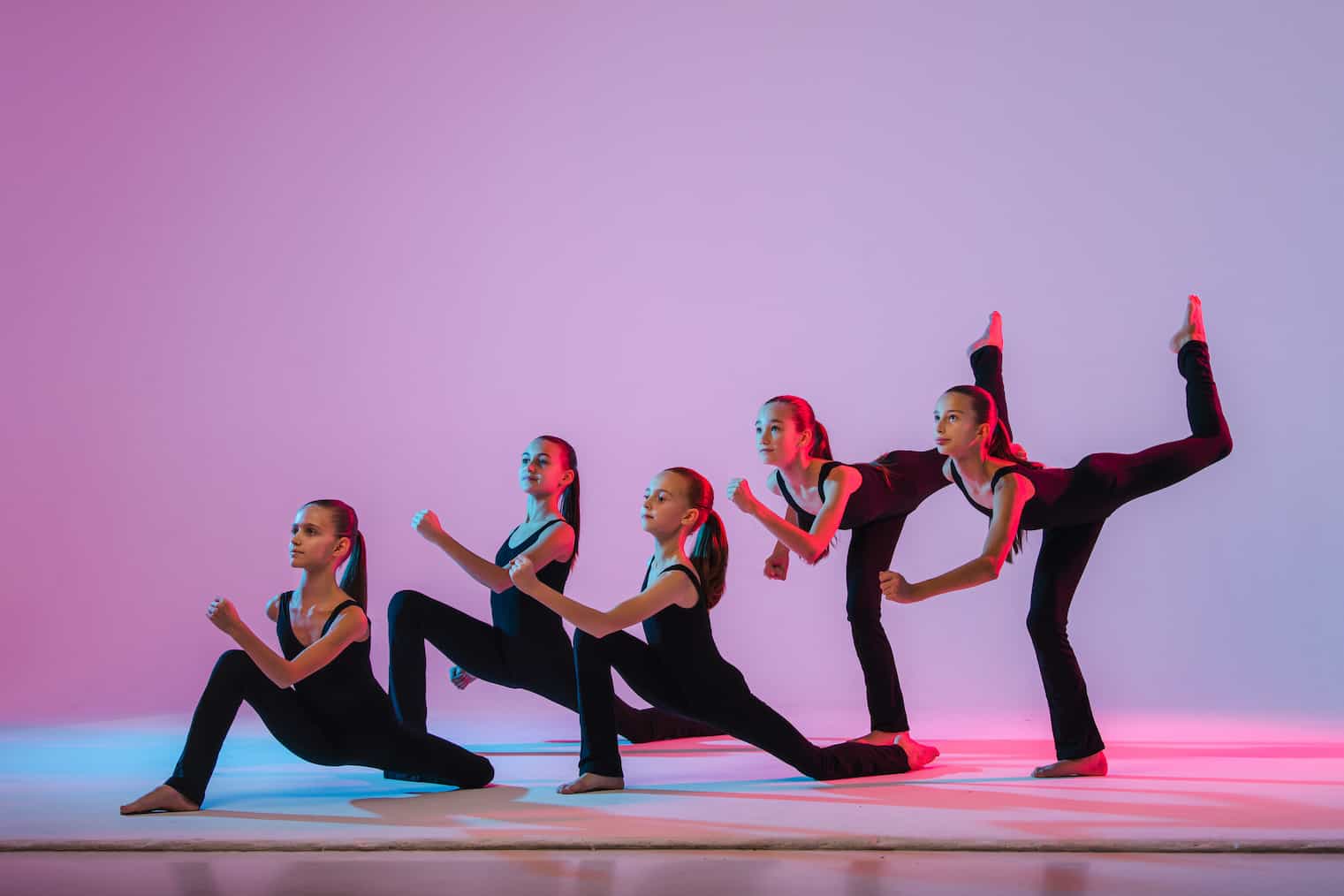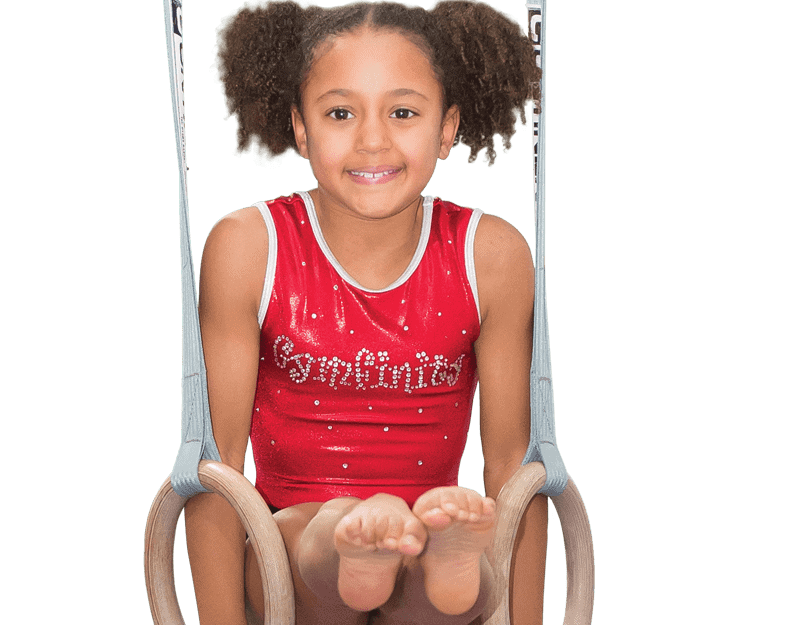11 min read
Last Updated on April 5, 2024
Here at Gymfinity Kids, we’re dedicated to providing fun and motivating activity classes that will get your child active and fall in love with the art of movement. We offer gymnastics, ninja and preschool movement classes for children of any level, and have launched Dance Mash-Up classes across some of our clubs.
Our Dance Mash-Up classes truly are a mash-up of all dance! We deep dive into a particular dance style for 6 – 8 weeks so the children can get a true understanding of the moves and put them into practice. They learn routines that are then performed to parents in our Show Weeks which take place in the week before half-term breaks or school holidays.

We have recently been running Musical Theatre dance classes where children got to learn all about bell kicks, 3-step turns, shimmies and jazz hands to great show tunes. And now for February and March 2024, we’re excited to announce the launch of the next dance style: Lyrical Dance.
Read on to find out more about lyrical dance, what it is, what to expect in a lyrical dance class and how the moves can help improve gymnastics performance.
If you’re based in or around Bracknell, Cambridge, Wandsworth or Walton-on-Thames, then you can get your child involved in our Dance Mash-Up classes and begin their fantastic dance journey.
BOOK A FREE TASTER
Gymfinity Kids: Lyrical Dance Classes

What is Lyrical Dance?
Lyrical dance is a beautiful style of dance that combines elements of ballet, jazz, and modern dance techniques. It focuses on expressing emotions, storytelling, and interpreting music through movement.
This type of dance often features fluid movements, gracefulness, and emotional intensity. The routines typically involve a blend of technical skill, expressiveness, and creativity, and emphasise the connection between the dancer’s movements and the lyrics or theme of the music being used, hence the term “lyrical.”
The founder of Dance Mash-Up, Rachel, has created lovely dance choreography that embraces the meaning and mood of great songs from hit musicals such as Wish, Frozen and the new Wonka film.

The Origins of Lyrical Dance:
Whilst lyrical dance has its roots in a blend of ballet, jazz, and modern dance, it has evolved to become its own distinct style. While it’s difficult to pinpoint an exact origin, the development of lyrical dance can be traced back to the mid-20th century.
Lyrical dance began to emerge as a distinct style in the latter half of the 20th century, as choreographers started to blend elements of ballet, jazz, and modern dance to create choreography that was more emotive, expressive, and fluid. Dancers sought to interpret the lyrics and themes of music through movement, giving rise to the term “lyrical dance.”
- Ballet Influence: Lyrical dance draws heavily from ballet, particularly in its emphasis on grace, fluidity, and technical precision. The influence can be seen in lyrical dance’s use of classical ballet techniques such as turnout, pointed toes, and arabesques.
- Modern Dance Influence: The modern dance movement of the early 20th century contributed to the development of lyrical. Modern dance emphasises freedom of movement, expressiveness, and the use of emotion to drive choreography, all of which are key aspects of lyrical dance.
- Jazz Influence: Jazz dance, with its energetic and syncopated movements, also played a role in shaping lyrical dance. Jazz dance techniques such as isolations, contractions, and fluid transitions are often incorporated into lyrical choreography.
Lyrical dance began to gain popularity in the late 20th and early 21st centuries, particularly through its inclusion in dance competitions, stage performances, and popular television shows. Its popularity continues to grow as dancers and choreographers explore new ways to blend fluid movement, technical skills and emotional expression.

Famous Musicals that feature Lyrical Dance:
Do you want to see lyrical dance in action? Many famous musicals incorporate lyrical dance as part of their choreography, adding emotional depth and storytelling through movement. See below for our favourite musicals that feature this style of dance and see which ones you know!
West Side Story: This classic musical features a mix of ballet and modern dance in its choreography. The iconic “Somewhere” ballet sequence showcases lyrical dance as a means of expressing the characters’ longing for a better life.
Fiddler on the Roof: While primarily known for its traditional Jewish folk dance (such as the Bottle Dance), “Fiddler on the Roof” also includes moments of lyrical dance. For example, the dream sequence during “Sunrise, Sunset” incorporates flowing movements that convey the emotions of the characters.
Cats: Andrew Lloyd Webber’s “Cats” features a variety of dance styles, including ballet, jazz, and lyrical dance. The choreography, inspired by the poems of T.S. Eliot, allows the characters to express their personalities and emotions through movement.
These musicals are just a few examples that incorporate lyrical dance as part of their choreographic language to enhance the emotional impact of the storytelling and connect with audiences on a deeper level.
Moves that are practised in Lyrical Dance:
Lyrical dance incorporates a wide range of movements from ballet, jazz, and modern dance so some of the moves may sound familiar if you have experience in any of these dance styles!

Turns and Leaps: Lyrical dance often includes a variety of turns such as pirouettes, fouettés, and chainés, as well as leaps like grand jeté, tour jeté, and calypso. These dynamic movements add energy and excitement to the choreography.
Extensions and Lines: Extensions refer to the lengthening of the legs and arms to create beautiful lines. Lyrical dancers often strive for high extensions and graceful lines to enhance the visual appeal of their movements.
Arabesques and Attitudes: Arabesques involve extending one leg behind the body while maintaining an upright posture, often with the other arm reaching forward. Attitudes are similar but involve bending the extended leg at the knee. These poses are commonly used to create elegant shapes and lines.
Contractions and Releases: These movements add texture and dynamics to the choreography, allowing dancers to convey a range of emotions. Contractions are where dancers engage the core and curl the spine inward, and releases are the opposite where they lengthen and expand the body.
Floor Work: Lyrical dance may include elements of floor work, where dancers perform movements and transitions on the floor, very similar to artistry used in gymnastics floor work – it’s to help create seamless transitions across the floor to new positions. This can include rolls and slides, adding depth and dimension to the choreography.
Glide and Flow: Lyrical dance emphasizes the use of continuous, flowing movements that seamlessly transition from one position to another. Dancers strive to maintain a sense of fluidity and grace throughout their movements, creating a sense of connection and continuity in the choreography.
Emotive Gestures: Lyrical dancers use their entire body, including their face and hands, to convey emotions and tell a story. They may use gestures such as reaching, gesturing, or embracing to communicate the lyrical content of the music.
These are just a few examples of the moves commonly used in lyrical dance, and if your child attends our gymnastics classes, you may spot that some moves are very similar to the artistry that’s utilised in gymnastics floor work!
Why should Children try Lyrical Dance?
Lyrical dance at Gymfinity Kids will provide a full-body workout that helps improve flexibility, strength, balance, and coordination. It promotes physical fitness and overall well-being, helping children develop healthy habits and lifestyles. But it’s not just about physical fitness – dance can bring about so many more benefits that can help your child’s development.

1. Expression and Creativity: Dance offers children a platform to express themselves creatively through movement. It encourages them to explore emotions, storytelling, and musical interpretation, fostering their artistic expression.
2. Emotional Development: Through lyrical dance, children learn to connect with and express a wide range of emotions, helping them develop emotional intelligence and empathy. They can express joy, sadness, excitement, and other feelings through their movements, which can be a valuable outlet for emotional expression and processing.
3. Confidence and Self-Esteem: Learning and mastering new dance skills in a supportive environment can boost children’s confidence and self-esteem. As they progress in class and gain confidence in their abilities, they may become more self-assured in other areas of their lives as well.
4. Teamwork and Collaboration: Our dance classes involve group choreography, encouraging teamwork, cooperation, and collaboration among dancers. Children learn to work together, communicate effectively, and support one another as they work towards common artistic goals.
5. Artistic Appreciation: By participating in lyrical dance, children develop an appreciation for the arts, including music, dance, and creative expression. They learn to listen to and interpret music, understand different dance styles, and appreciate the beauty and power of artistic expression.
6. Stress Relief and Relaxation: All forms of dance can serve as a form of stress relief and relaxation for children. It provides a positive outlet for releasing energy, expressing emotions, and relieving tension, promoting mental and emotional well-being.
Dance can provide a holistic and enriching experience that combines physical activity, artistic expression, emotional development, and social interaction, making it a valuable activity for children to explore and enjoy.
Can Lyrical Dance help with Gymnastics Performance?
Lyrical dance and gymnastics are two distinct disciplines, each with its own set of skills and techniques. However, there are several ways in which practising lyrical dance can potentially complement and benefit a gymnast’s training, especially in their artistry and connection to the music used in their routines.

Flexibility:
Lyrical dance often requires a high degree of flexibility, particularly in the legs, back, and shoulders. Regularly practising lyrical dance can help gymnasts improve their overall flexibility, which is essential for performing gymnastics skills with proper form and technique.
Graceful Movement:
Dance emphasizes fluid and graceful movement, helping children develop a sense of rhythm, timing, and expression. Incorporating lyrical dance into their training can help gymnasts enhance their ability to move with grace and elegance, which can be beneficial when performing routines or executing choreographed sequences in gymnastics.
Body Awareness and Control:
Dancers need to have a strong sense of body awareness and control, as they execute movements with precision and intention. This can translate to improved body awareness and control for gymnasts, helping them better understand and refine their movements on apparatus such as the balance beam, uneven bars, or floor exercise.

Artistic Expression:
When it comes to gymnastics floor routines, judges predominantly look at execution (how neatly and well the gymnast performs each element of the routine), but don’t forget that artistry can make a performance stand out! Especially in the dance sections of gymnastics routines.
Artistry is the quality of the gymnast’s movement and expressiveness during their routine. The artistry can help the gymnasts get inventive when they transition from one part of the floor to another and can add that special ‘something’ to the routine that can get some extra points.
Lyrical dance encourages dancers to express emotions and tell stories through movement, fostering creativity and artistic expression. Gymnasts who incorporate elements of lyrical dance into their training may develop a greater ability to express themselves artistically, adding depth and nuance to their performances, especially on the floor.
Musicality:
Lyrical dance is often performed to music with expressive melodies and lyrics, requiring dancers to interpret the music and synchronize their movements with the rhythm and phrasing. Developing musicality through lyrical dance can help gymnasts better understand and connect with the music in their routines, enhancing the overall performance quality.
While lyrical dance can offer several benefits to gymnasts, including helping children learn creativity, originality and how to captivate those watching, it’s important to remember that it should be considered as a supplement to, rather than a replacement for, traditional gymnastics training.
If you’re interested in this next dance style in our Dance Mash-Up timetable, then hit the button below to book your free taster class!
BOOK A FREE TASTER






